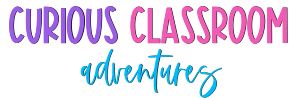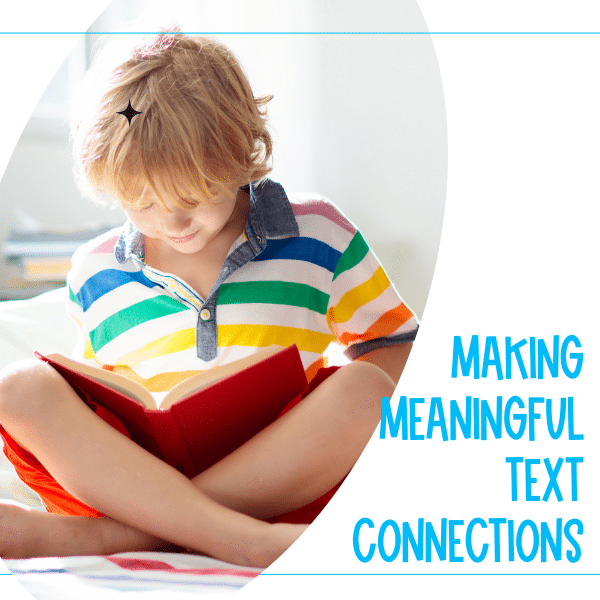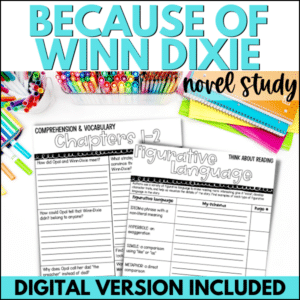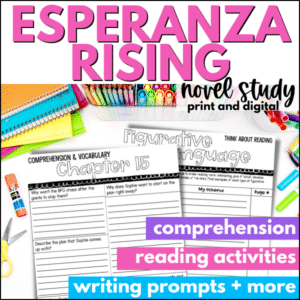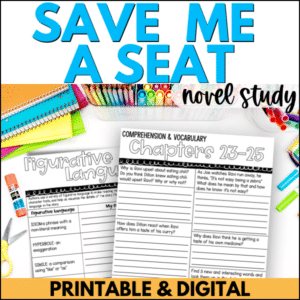As reading teachers, we know that the magic really happens when students start connecting with what they read. Whether they’re saying, “This reminds me of something I’ve done before!” or “I read something like this in another book,” these text connections help make stories stick and deepen their understanding.
Ready to help your students make meaningful text-to-self, text-to-text, and text-to-world connections? Here are some creative ways to get them thinking and connecting in no time!
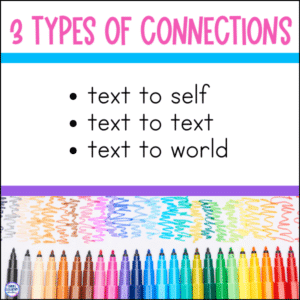
What are Text Connections?
Before we jump into the fun stuff, it’s important to explain what we mean by text connections:
- Text-to-Self (T-S): This is when students relate what they read to their own personal experiences.
- Text-to-Text (T-T): This is when students see similarities between what they’re reading and other books, movies, or even songs they’ve experienced.
- Text-to-World (T-W): This is when students make connections between the text and real-world events, issues, or things they’ve learned.
Now that we’re all on the same page (pun intended 😉), let’s explore some ways to teach each of the text connections!
Text-to-Self Connections: Make It Personal!
Text-to-self connections are often the easiest for students to make because they’re based on their own lives. The trick here is to help them think more deeply about those connections.
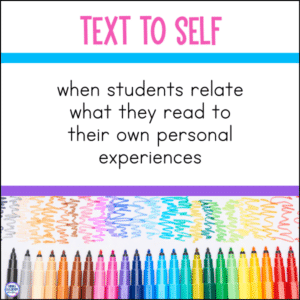
1. Text Connections Journals
Encourage your students to keep text-to-self connection journals. After reading a story or chapter, ask them to jot down a few sentences about a time when they felt the same way as the character or experienced something similar. This not only builds connections but also strengthens their writing skills!
- Example Prompt: “In the story, the character felt nervous about their first day at a new school. Have you ever felt nervous about starting something new? Write about your experience.”
2. Story Scene Swap
Create a text-to-self connection activity by having students swap a scene from the book with something from their own life. After reading, ask students to choose a specific moment in the story and replace the character’s experience with one of their own. Then, they can share it with the class or in small groups.
- Example: “In the book, the character had a really fun time at a birthday party. If you could swap that party with one you’ve been to, how would it change the story?”
3. Text Connections Hot Seat
This one’s a classroom favorite! Choose a student to sit in the hot seat (a special chair) and ask them to share a text-to-self connection. After they’ve shared, their classmates can ask them questions about how their experience connects to the book. It’s a great way to spark discussions and keep everyone engaged.
- Example Question: “How did your experience help you understand how the character felt in that moment?”
Text-to-Text Connections: Let’s Compare!
Making text-to-text connections is a powerful way for students to think about common themes, character types, or plots across different books and media. Here’s how you can help them make those text connections:
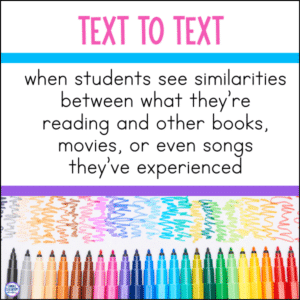
1. Book Pairings
Create book pairings by reading two texts that share similar themes or characters. After reading both, guide a discussion or have students fill out a Venn diagram comparing and contrasting the books. You can even tie in movies, songs, or short stories.
- Example: After reading Charlotte’s Web and The One and Only Ivan, have students compare the themes of friendship and perseverance in both books.
2. Text Connections Cards
Give students text connections cards with prompts that encourage them to think about text-to-text connections. As they read, they can flip through their cards to see if any of the questions help them make a connection.
- Example Prompts:
- “Does this book remind you of another book with a similar theme?”
- “Have you read another book where the characters face the same type of challenge?”
3. Character Text Connections Map
Have students create character text connections maps that link characters from different stories based on their traits or struggles. For example, if they’re reading Percy Jackson, they might connect Percy’s bravery to another character from a different story they’ve read.
- Extension: Hang these maps on the wall and add to them throughout the school year as you read new books together. This will give students a visual representation of all the connections they’re making!
Text-to-World Connections: Relate it to Real Life!
Text-to-world connections can sometimes be the hardest for students to make because they require some knowledge of current events or global issues. However, with a little guidance, your students can start seeing the text connections between stories and the world around them.
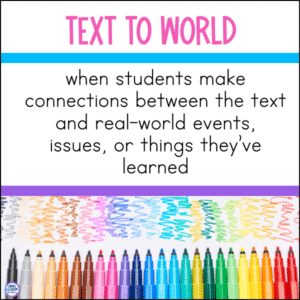
1. Text Connections Newsboard
Create a classroom newsboard where students can pin articles, pictures, or headlines from current events that relate to themes or situations in the books you’re reading. Have students explain why they think the article connects to the story.
- Example: If you’re reading a book about overcoming challenges, students could pin an article about someone who has overcome adversity in real life.
2. World Text Connections Web
After reading, guide students in creating a world connection web. Write the main theme of the story in the center of the board, and then have students suggest real-world connections to that theme. As students share their ideas, you’ll create a web of connections that show how the theme of the story extends far beyond the book itself!
- Example: If the story is about teamwork, students might mention examples from sports teams, businesses, or group projects they’ve done.
3. Global Text Connections Projects
For a deeper dive, turn text-to-world connections into a global connection project. Have students research a global issue related to the story and present their findings to the class. This activity not only builds connections but also promotes critical thinking and research skills.
- Example: If you’re reading a book about a dystopian world created by pollution or climate change, students can research how this issue is affecting different parts of the world and present their findings with posters, slideshows, or even skits!
Connecting Readers with the World Around Them
Text connections are a crucial part of helping students think critically about what they read and how it relates to their own lives, other stories, and the world. By using these fun and creative activities, you’ll help your students see reading as more than just words on a page—it becomes a way to explore ideas, reflect on their experiences, and make sense of the world.
So go ahead and try out some of these ideas in your classroom! Before long, your students will be making connections left and right—and deepening their love of reading along the way.
Need a few book recommendations to get you started? These books are some of my favorites for teaching text connections:
